You never know what situation you’ll be thrust into when disaster strikes, so knowing what possible food sources you have in the wild become vitally important as a true prepper. Thats why we’ve compiled this list of 19 Common Edible plants that you can find in the wild. Study this list and get to know the species, because if your bugout forces you into the wilderness, these natural food sources may save your life.
Amaranth (Amaranthus retroflexus and other species)
Native to the Americas but found on most continents, amaranth is an edible weed. You can eat all parts of the plant, but be on the look out for spines that appear on some of the leaves. While not poisonous, amaranth leaves do contain oxalic acid and may contain large amounts of nitrates if grown in nitrate-rich soil. It’s recommended that you boil the leaves to remove the oxalic acid and nitrates. Don’t drink the water after you boil the plant. With that said, you can eat the plant raw if worse comes to worst.
Asparagus (Asparagus officinalis)
The vegetable that makes your pee smell funny grows in the wild in most of Europe and parts of North Africa, West Asia, and North America. Wild asparagus has a much thinner stalk than the grocery-store variety. It’s a great source of source of vitamin C, thiamine, potassium and vitamin B6. Eat it raw or boil it like you would your asparagus at home.
Burdock (Arctium lappa)
Medium to large-sized plant with big leaves and purplish thistle-like flower heads. The plant is native to the temperate areas of the Eastern Hemisphere; however, it has been naturalized in parts of the Western Hemisphere as well. Burdock is actually a popular food in Japan. You can eat the leaves and the peeled stalks of the plant either raw or boiled. The leaves have a bitter taste, so boiling them twice before eating is recommended to remove the bitterness. The root of the plant can also be peeled, boiled, and eaten.
Cattail (Typha)
Known as cattails or punks in North America and bullrush and reedmace in England, the typha genus of plants is usually found near the edges of freshwater wetlands. Cattails were a staple in the diet of many Native American tribes. Most of a cattail is edible. You can boil or eat raw the rootstock, or rhizomes, of the plant. The rootstock is usually found underground. Make sure to wash off all the mud. The best part of the stem is near the bottom where the plant is mainly white. Either boil or eat the stem raw. Boil the leaves like you would spinach. The corn dog-looking female flower spike can be broken off and eaten like corn on the cob in the early summer when the plant is first developing. It actually has a corn-like taste to it.
Clovers (Trifolium)
Lucky you-clovers are actually edible. And they’re found just about everywhere there’s an open grassy area. You can spot them by their distinctive trefoil leaflets. You can eat clovers raw, but they taste better boiled.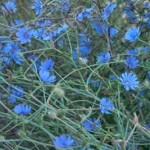
Chicory (Cichorium intybus)
You’ll find chicory growing in Europe, North America, and Australia. It’s a bushy plant with small blue, lavender, and white flowers. You can eat the entire plant. Pluck off the young leaves and eat them raw or boil them. The chicory’s roots will become tasty after boiling. And you can pop the flowers in your mouth for a quick snack.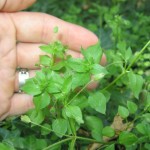
Chickweed (Stellaria media)
You’ll find this herb in temperate and arctic zones. The leaves are pretty hefty, and you’ll often find small white flowers on the plant. They usually appear between May and July. You can eat the leaves raw or boiled. They’re high in vitamins and minerals.
Curled Dock (Rumex crispus)
You can find curled dock in Europe, North America, South America, and Australia. It’s distinguished by a long, bright red stalk that can reach heights of three feet. You can eat the stalk raw or boiled. Just peel off the outer layers first. It’s recommend that you boil the leaves with several changes of water in order to remove its naturally bitter taste.
Dandelion (Taraxacum officinale)
Sure, it’s an obnoxious weed on your perfectly mowed lawn, but when you’re out in the wild this little plant can save your life. The entire plant is edible- roots, leaves, and flower. Eat the leaves while they’re still young; mature leaves taste bitter. If you do decide to eat the mature leaves, boil them first to remove their bitter taste. Boil the roots before eating as well. You can drink the water you boiled the roots in as a tea and use the flower as a garnish for your dandelion salad.
Field Pennycress (Thalspi vulgaris)
Field Pennycress is a weed found in most parts of the world. Its growing season is early spring to late winter. You can eat the seeds and leaves of field pennycress raw or boiled. The only caveat with field pennycress is not to eat it if it’s growing in contaminated soil. Pennycress is a hyperaccumulator of minerals, meaning it sucks up any and all minerals around it. General rule is don’t eat pennycress if it’s growing by the side of the road or is near a Superfund site (a site where toxic wastes have been dumped and the Environmental Protection Agency has designated them to be cleaned up).
Fireweed (Epilobium angustifolium)
This pretty little plant is found primarily in the Northern Hemisphere. You can identify fireweed by its purple flower and the unique structure of the leaves’ veins; the veins are circular rather than terminating on the edges of the leaves. Several Native American tribes included fireweed in their diet. It’s best eaten young when the leaves are tender. Mature fireweed plants have tough and bitter tasting leaves. You can eat the stalk of the plant as well. The flowers and seeds have a peppery taste. Fireweed is a great source of vitamins A and C.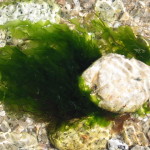
Green Seaweed (Ulva lactuca)
If you’re ever shipwrecked on a deserted island, fish the waters near the beach for some green seaweed. This stuff is found in oceans all over the world. After you pull green seaweed from the water, rinse with fresh water if available and let it dry. You can eat it raw or include it in a soup. Or if you’re particularly enterprising, catch a fish with your homemade spear and use the seaweed to make sushi rolls, sans rice.
Kelp (Alaria esculenta)
Kelp is another form of seaweed. You can find it in most parts of the world. Eat it raw or include it in a soup. Kelp is a great source of folate, vitamin K, and lignans.
Plantain (Plantago)
Found in all parts of the world, the plantain plant (not to be confused with the banana-like plantain) has been used for millennia by humans as a food and herbal remedy for all sorts of maladies. You can usually find plantains in wet areas like marshes and bogs, but they’ll also sprout up in alpine areas. The oval, ribbed, short-stemmed leaves tend to hug the ground. The leaves may grow up to about 6″ long and 4″ wide. It’s best to eat the leaves when they’re young. Like most plants, the leaves tend to get bitter tasting as they mature. Plantain is very high in vitamin A and calcium. It also provides a bit of vitamin C.
Prickly Pear Cactus (Opuntia)
Found in the deserts of North America, the prickly pear cactus is a very tasty and nutritional plant that can help you survive the next time you’re stranded in the desert. The fruit of the prickly pear cactus looks like a red or purplish pear. Hence the name. Before eating the plant, carefully remove the small spines on the outer skin or else it will feel like you’re swallowing a porcupine. You can also eat the young stem of the prickly pear cactus. It’s best to boil the stems before eating.
Purslane (Portulaca oleracea)
While considered an obnoxious weed in the United States, purslane can provide much needed vitamins and minerals in a wilderness survival situation. Ghandi actually numbered purslane among his favorite foods. It’s a small plant with smooth fat leaves that have a refreshingly sour taste. Purslane grows from the beginning of summer to the start of fall. You can eat purslane raw or boiled. If you’d like to remove the sour taste, boil the leaves before eating.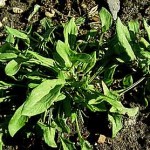
Sheep Sorrel (Rumex acetosella)
Sheep sorrel is native to Europe and Asia but has been naturalized in North America. It’s a common weed in fields, grasslands, and woodlands. It flourishes in highly acidic soil. Sheep sorrel has a tall, reddish stem and can reach heights of 18 inches. Sheep sorrel contains oxalates and shouldn’t be eaten in large quantities. You can eat the leaves raw. They have a nice tart, almost lemony flavor.
White Mustard (Synapsis alba)
White mustard is found in the wild in many parts of the world. It blooms between February and March. You can eat all parts of the plant- seeds, flowers, and leaves.
Wood Sorrel (Oxalis)
You’ll find wood sorrel in all parts of the world; species diversity is particularly rich in South America. Humans have used wood sorrel for food and medicine for millennia. The Kiowa Indians chewed on wood sorrel to alleviate thirst, and the Cherokee ate the plant to cure mouth sores. The leaves are a great source of vitamin C. The roots of the wood sorrel can be boiled. They’re starchy and taste a bit like a potato.
Plants to Avoid
If you can’t clearly identify a plant and you don’t know if it’s poisonous, it’s better to be safe than sorry. Steer clear from a plant if it has:
- Milky or discolored sap
- Spines, fine hairs, or thorns
- Beans, bulbs, or seeds inside pods
- Bitter or soapy taste
- Dill, carrot, parsnip, or parsley-like foliage
- “Almond” scent in the woody parts and leaves
- Grain heads with pink, purplish, or black spurs
- Three-leaved growth pattern
Many toxic plants will exhibit one or more of the above characteristics. Bear in mind that some of the plants we suggested above have some of these attributes, yet they’re still edible. The characteristics listed are just guidelines for when you’re not confident about what you’re dealing with.
Books can be your best pre-collapse investment.
The Lost Ways (Learn the long forgotten secrets that helped our forefathers survive famines,wars,economic crisis and anything else life threw at them)
Survival MD (Best Post Collapse First Aid Survival Guide Ever)
Conquering the coming collapse (Financial advice and preparedness )
Liberty Generator (Build and make your own energy source)
Backyard Liberty (Easy and cheap DIY Aquaponic system to grow your organic and living food bank)
Bullet Proof Home (A Prepper’s Guide in Safeguarding a Home )
Family Self Defense (Best Self Defense Strategies For You And Your Family)
Survive Any Crisis (Best Items To Hoard For A Long Term Crisis)
Survive The End Days (Biggest Cover Up Of Our President)
SOURCE : expertprepper.com

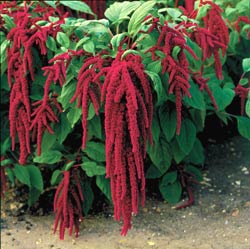
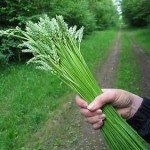
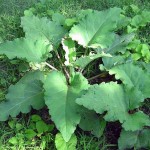
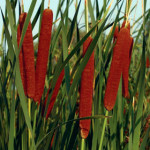
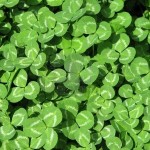
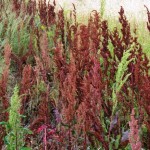
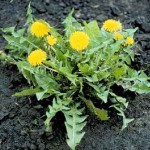
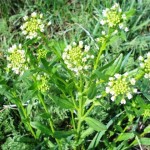
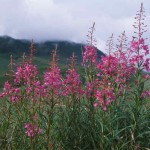
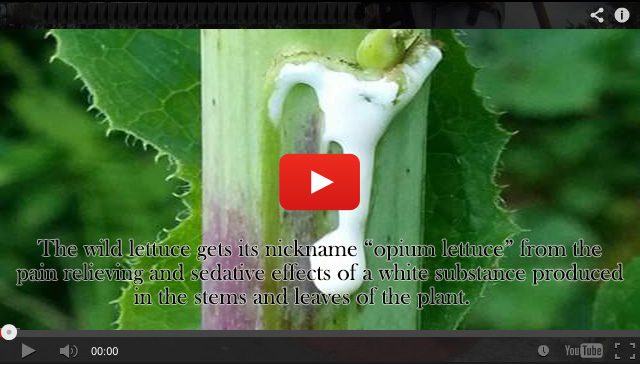
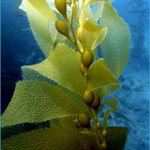
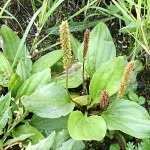
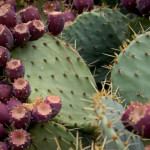
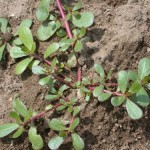
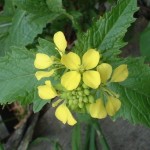
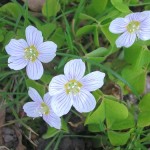

Great list! Only suggestion I would make is to have larger versions of the images so that we have a clear image of what we are supposed to be OK eating. These images are not large enough to determine details that may be the difference between toxic or not.